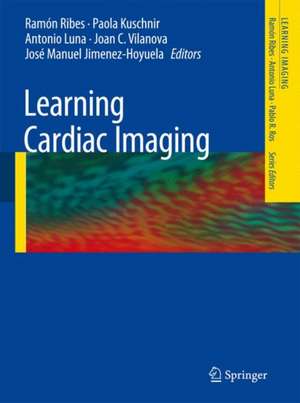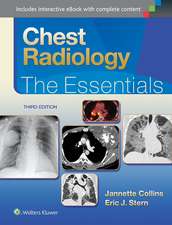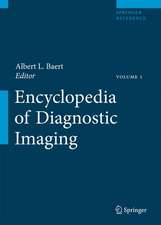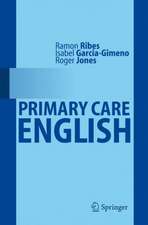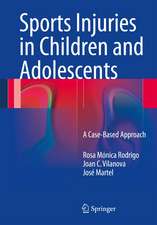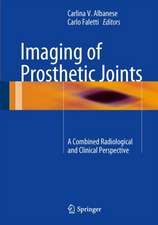Learning Cardiac Imaging: Learning Imaging
Editat de Ramón Ribes, Paola Kuschnir, Antonio Luna, Joan C. Vilanova, José Manuel Jimenez-Hoyuelaen Limba Engleză Paperback – 21 dec 2009
Preț: 459.75 lei
Preț vechi: 483.95 lei
-5% Nou
88.01€ • 90.52$ • 73.02£
Carte disponibilă
Livrare economică 27 ianuarie-10 februarie
Specificații
ISBN-10: 3540790829
Pagini: 292
Ilustrații: XIV, 151 p. 223 illus., 80 illus. in color.
Dimensiuni: 193 x 260 x 13 mm
Greutate: 0.52 kg
Ediția:2010
Editura: Springer Berlin, Heidelberg
Colecția Springer
Seria Learning Imaging
Locul publicării:Berlin, Heidelberg, Germany
Public țintă
Professional/practitionerCuprins
Cardiac Multislice CT.- Echocardiography.- Cardiac Magnetic Resonance.- Nuclear Cardiology.
Caracteristici
Descriere
After the publication of Learning Diagnostic Imaging, which was an introductory teaching ? le to the ten radiological subspecialties included in the American Boards of Radiology, we began to write a series of teaching ? les on each radiological subspecialty. If the ? rst book of the series was mainly aimed at residents and provided them with an introductory tool to the study of radiology, the subsequent volumes of the series try to provide the reader with an introduction to the study of each radiological subspecialty. In Learning Cardiac Imaging, we intend to review cardiac imaging from the p- spective of the six imaging modalities usually performed to obtain anatomic and functional information of the heart. In old days, conventional radiographs gave us some information about the an- omy and, only secondarily, the pathophysiology of the heart. With the advent of echocardiography, the heart could be studied dynamically. Nuclear Medicine and Cardiac MR allowed the study of cardiac function. 32- and 64-detector multislice CT let us obtain images of the coronary tree in a noninvasive approach. Cardiac imaging is complex and many health care professionals are needed, ? rstly, in the obtention and, secondly, in the interpretation of the images. Not only rad- lologists, cardiologists, and nuclear medicine physicians are needed, specialized nurses and technicians are indispensable to obtain diagnostic images of such a dynamic anatomic structure as the heart. The authorship of the book re? ects its multidisciplinary approach of the book.
